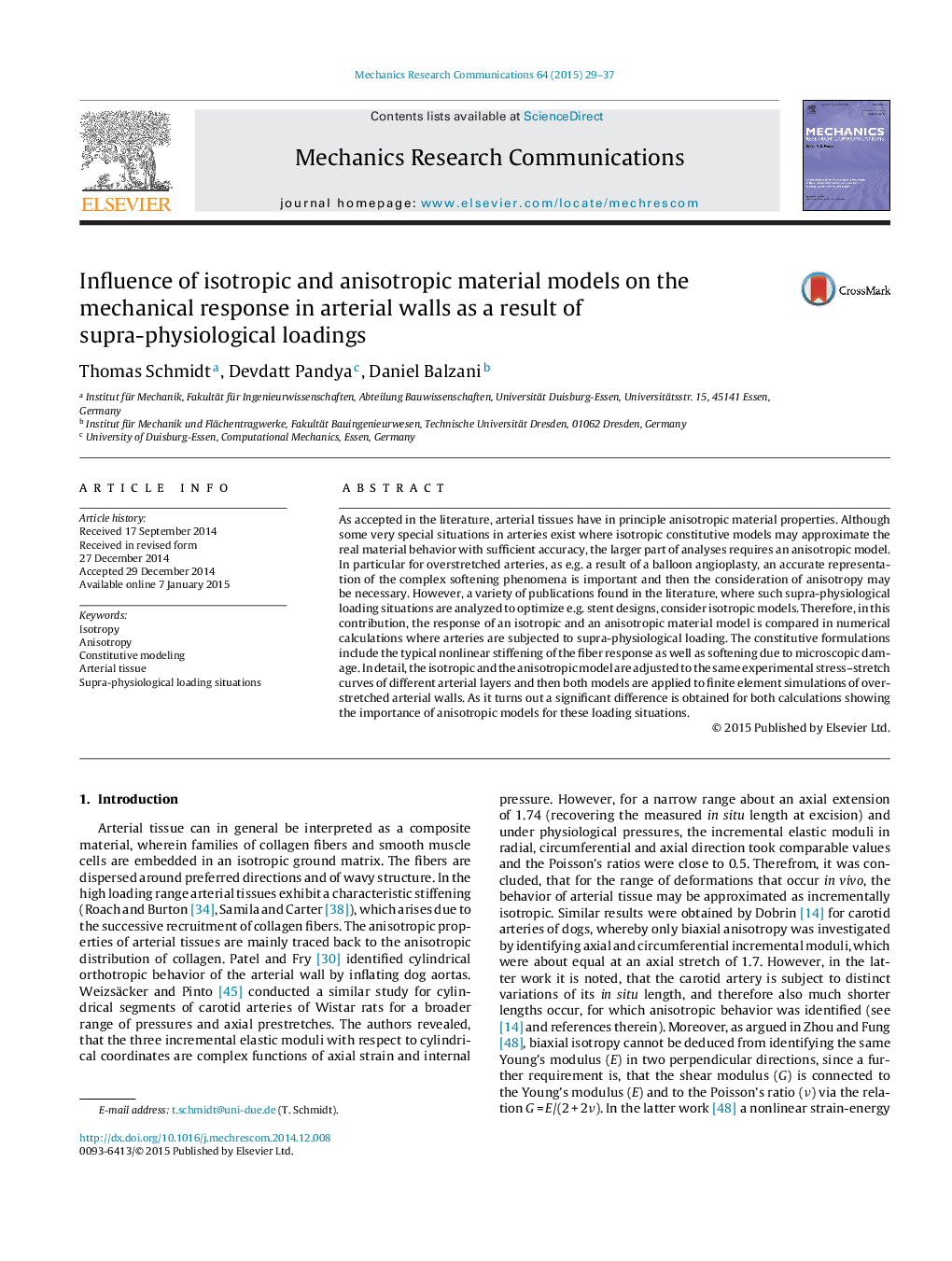| کد مقاله | کد نشریه | سال انتشار | مقاله انگلیسی | نسخه تمام متن |
|---|---|---|---|---|
| 799056 | 1467672 | 2015 | 9 صفحه PDF | دانلود رایگان |
• Comparison of isotropic and anisotropic response in arterial wall simulations.
• Analysis of different influence under supra-physiological loading situations.
• Use of anisotropic model turns out to be important for e.g. stenting analysis.
As accepted in the literature, arterial tissues have in principle anisotropic material properties. Although some very special situations in arteries exist where isotropic constitutive models may approximate the real material behavior with sufficient accuracy, the larger part of analyses requires an anisotropic model. In particular for overstretched arteries, as e.g. a result of a balloon angioplasty, an accurate representation of the complex softening phenomena is important and then the consideration of anisotropy may be necessary. However, a variety of publications found in the literature, where such supra-physiological loading situations are analyzed to optimize e.g. stent designs, consider isotropic models. Therefore, in this contribution, the response of an isotropic and an anisotropic material model is compared in numerical calculations where arteries are subjected to supra-physiological loading. The constitutive formulations include the typical nonlinear stiffening of the fiber response as well as softening due to microscopic damage. In detail, the isotropic and the anisotropic model are adjusted to the same experimental stress–stretch curves of different arterial layers and then both models are applied to finite element simulations of overstretched arterial walls. As it turns out a significant difference is obtained for both calculations showing the importance of anisotropic models for these loading situations.
Journal: Mechanics Research Communications - Volume 64, March 2015, Pages 29–37
